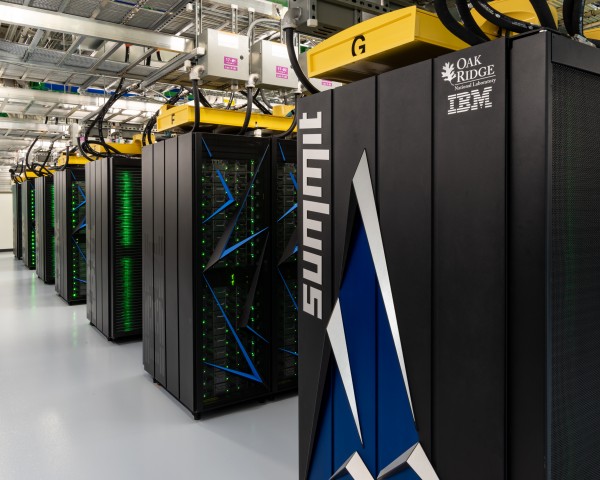
Oak Ridge National Laboratory’s Summit supercomputer was named number one on the TOP500 List, a semiannual ranking of the world’s fastest computing systems on Monday, June 25, 2018. (Photo credit: Carlos Jones/Oak Ridge National Laboratory, U.S. Department of Energy)
For the first time since 2012, the United States has the most powerful supercomputer in the world, and it’s again located at Oak Ridge National Laboratory.
The new supercomputer, called Summit, is capable of 200 petaflops, or 200,000 trillion calculations per second. Equipment delivery for Summit was completed in March, and officials celebrated the launch of the supercomputer in a ceremony attended by U.S. Energy Secretary Rick Perry on June 8.
The last time the United States had the top supercomputer was in November 2012. That machine, which is still in use, is named Titan, and it’s also at ORNL. It’s now number seven on the semiannual TOP500 list, which was released Monday.
China had held the top spot since June 2013, and the country had held the top two spots since June 2016. That ended with Monday’s TOP500 announcement. Previously at number one and number two, the top two Chinese supercomputers have fallen to number two and number four.
ORNL, a U.S. Department of Energy laboratory, now has two of the top seven systems on the list. They are Summit at number one and Titan at number seven. The United States now has six of the top 10 machines, according to the TOP500 list.
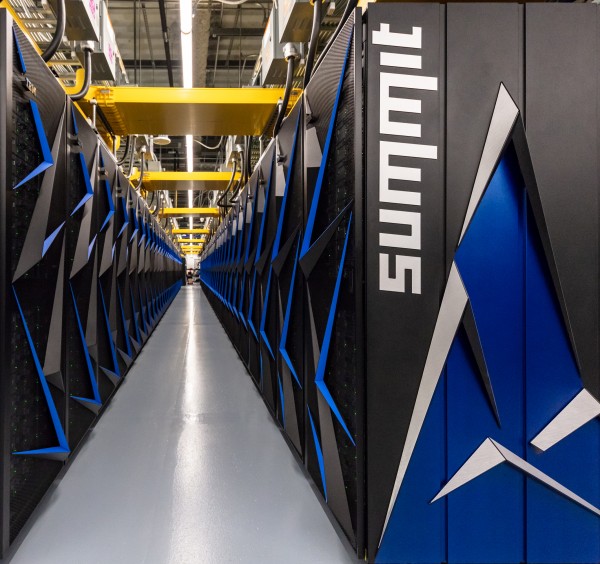
Oak Ridge National Laboratory’s Summit supercomputer was named number one on the TOP500 List, a semiannual ranking of the world’s fastest computing systems on Monday, June 25, 2018. (Photo credit: Carlos Jones/Oak Ridge National Laboratory, U.S. Department of Energy)
Summit
Summit is an IBM-built supercomputer. It reached a speed of 122.3 petaflops on a benchmark test known as High Performance Linpack, or HPL. That’s the software used to evaluate and rank supercomputers on the TOP500 list.
At its theoretical peak, Summit is capable of 200 petaflops, or 200,000 trillion calculations per second—about eight times more performance than its predecessor, Titan.
As big as two tennis courts, Summit has 4,608 compute servers. Each has two 22-core IBM Power9 central processing units (CPUs) and six NVIDIA Tesla V100 graphics processing unit (GPU) accelerators. That’s more than 9,000 conventional processors and nearly 28,000 graphics processors, or about 37,000 total.
“Summit is interconnected with a dual-rail Mellanox EDR InfiniBand network, which provides overall 200 gigabits per second throughput to each compute server,” ORNL said. “The combination of cutting-edge hardware and robust data subsystems marks an evolution of the hybrid CPU-GPU architecture successfully pioneered by Titan and a substantial step toward the goal of delivering the first U.S. exascale supercomputer—a system capable of a billion billion double precision floating point operations per second.”
Summit runs a standard Linux operating system from Red Hat in Red Hat Enterprise Linux.
“The system also possesses more than 10 petabytes of memory paired with high-bandwidth pathways for efficient data movement,” the lab said.
Data is reported to be transferred at unprecedented speed.
Besides being the most powerful supercomputer, Summit has also been described as the world’s smartest supercomputer because of its enormous memory and data handling capabilities, as well as its unique machine learning processor design.
Summit is reported to have cost $200 million and taken four years to build. It was announced as number one on the TOP500 list on Monday at the ISC High Performance conference in Frankfurt, Germany.
“The designation recognizes the IBM-built system as the science community’s most powerful computational tool for solving problems in energy, advanced materials, artificial intelligence, and other domains,” ORNL said.
Research
Summit is the third ORNL system to be ranked number one by TOP500, following in the footsteps of the Jaguar and Titan supercomputers. Jaguar ranked as the world’s fastest system in November 2009 and June 2010, while Titan held the title in November 2012.
“With Summit, researchers will be able to simulate and explore complex phenomena and obtain results in disciplines ranging from quantum materials and chemistry, advanced fission and fusion energy, to bioenergy and foundational biosciences, faster and in greater detail,†ORNL Director Thomas Zacharia said. “In addition to traditional modeling and simulation, Summit will also serve as an artificial intelligence and deep learning behemoth, capable of analyzing massive amounts of data and automating critical steps of the discovery process.â€
U.S. Senator Lamar Alexander, a Tennessee Republican, said Monday’s announcement is more proof that the scientific brainpower, energy research, and technological capabilities in the Oak Ridge area are among the best in the world.
“Scientists around the world have been working to develop supercomputers for years—but scientists at Oak Ridge National Laboratory just built the fastest one: Summit,†Alexander said. “I’m proud of this area and what we have been able to accomplish.â€
Alexander is chair of the U.S. Senate’s subcommittee on energy and water appropriations, which funds the government’s supercomputing programs. He said supercomputers can be used to solve problems in almost every area of scientific research. Having the fastest supercomputer in the world will allow scientists at Oak Ridge to solve bigger problems and simulate more complex things, Alexander said. And, he added, Summit will attract the best researchers in the world to Oak Ridge National Laboratory.
“Supercomputers cost money, a lot of it,â€Â Alexander said. “And this also would not have happened unless bipartisan majorities in Congress had for several years appropriated record levels of taxpayer dollars to make our country first in the world in supercomputing. President Trump has signed two of those appropriations bills and should include supercomputing as part of his America First agenda. This is one more example of how federal government sponsored research has been a crucial part of making it possible for the United States to produce 24 percent of the world’s wealth for just 5 percent of the world’s people.â€
U.S. Representative Chuck Fleischmann, a Republican whose district includes Oak Ridge, said leadership in supercomputing is a national priority.
“Oak Ridge will continue to lead the way toward the next milestone: exascale computing,†Fleischmann said. “The contributions of Oak Ridge to American innovation and scientific achievement are incalculable, and I congratulate the ORNL team for, yet again, making East Tennessee home to the world’s fastest supercomputer.â€
Summit is a step on the path to exascale computing, which will feature systems with more than 1,000 petaflops—capable of a billion billion calculations per second. Beyond exascale computing is quantum computing. ORNL is expected to play an important role in both, including with an exascale system that could be called Frontier, possibly around 2021 or later.
Before Summit launched this month, ORNL said, scientists began using parts of the system to test and demonstrate its significant capabilities. Summit is expected to be made available to the research community through DOE’s user programs beginning with allocations made under the Innovative and Novel Computational Impact on Theory and Experiment (INCITE) user program that will start in January 2019.

Pictured above being interviewed by a CNBC television crew before a ceremony on Friday afternoon, June 8, 2018, for the new Summit supercomputer at Oak Ridge National Laboratory are Ginni Rometty, left, chair, president, and chief executive officer of IBM; Rick Perry, second from right, U.S. Department of Energy secretary; and Jensen Huang, right, founder, president, and CEO of NVIDIA. (Photo by John Huotari/Oak Ridge Today)
ORNL plans to accept Summit this summer.
The lab then plans to move on to a period that they are calling “early science.â€
Potential uses for the world’s most powerful machine include applications in health care analytics for the nation’s veterans, ORNL said.
U.S. Representative Phil Roe, a Republican from the First District in East Tennessee, said he has been very impressed with the work being done at ORNL.
“Their partnerships on behalf of our nation’s veterans are a great asset, and I look forward to sharing what I learned with my colleagues on the House Committee on Veterans’ Affairs,” Roe said in an ORNL press release. “As chairman, my goal is to ensure veterans have access to quality health care, and I appreciate ORNL’s shared commitment to this important goal.â€
For the past three years, teams have been preparing their applications to run on Summit. A selection of the principal investigators of these application readiness teams includes:
- Salman Habib of Argonne National Laboratory, whose team is modeling the large-scale structure and distribution of matter over the 13-billion-year lifespan of the universe.
- Dmytro Bykov of Oak Ridge National Laboratory, whose team aims to describe the electronic structure of large molecular systems using quantum chemistry techniques, with targeted applications that include pharmacology and nanotechnology.
- Abhishek Singharoy of Arizona State University, whose team is investigating the mechanics of a biological motor called ATP synthase in all-atom detail, a study that may aid the design of bio-inspired clean energy technology.
- Gaute Hagen of Oak Ridge National Laboratory, whose team is calculating the forces within atomic nuclei to study phenomena such as neutrinoless double-beta decay, a hypothesized form of radioactive decay.
- Joe Oefelein of Georgia Tech, whose team is carrying out combustion simulations that closely match engine operating conditions to inform the design of fuel-efficient, low-emission engines.
Other supercomputers
The performance of the new number two system on the TOP500 list, Sunway TaihuLight, has remained unchanged at 93 petaflops since it came online in June 2016, when it debuted at number one. Sunway TaihuLight had topped the TOP500 list for two years before dropping a spot this June, bumped from the lead by Summit. Sunway TaihuLight is a system developed by China’s National Research Center of Parallel Computer Engineering and Technology, and it is installed at the National Supercomputing Center in Wuxi.
Making its debut at the number three spot was Sierra, a new system at the DOE’s Lawrence Livermore National Laboratory in Livermore, California, east of Oakland and San Francisco. Sierra delivered a performance of 71.6 petaflops on HPL, the TOP500 list said. Built by IBM, Sierra’s architecture is similar to that of Summit, with each of its 4,320 nodes powered by two Power9 CPUs plus four NVIDIA Tesla V100 GPUs and using the same Mellanox EDR InfiniBand as the system interconnect, the TOP500 list said.
Another previous number one supercomputer, Tianhe-2, fell two notches to the number four spot, despite receiving a major upgrade and being renamed Tianhe-2A (Milky Way-2A), the TOP500 list said. The machine’s five-year-old Xeon Phi accelerators were replaced with custom-built Matrix-2000 coprocessors, and the new hardware increased the system’s HPL performance from 33.9 petaflops to 61.4 petaflops. Tianhe-2A was developed by China’s National University of Defense Technology, and it is installed at the National Supercomputer Center in Guangzhou, China.
The list said four of the five top systems announced this June were either new or substantially upgraded. The upgraded system was Tianhe-2A, and the new systems were Summit, Sierra, and the new AI Bridging Cloud Infrastructure, which ranked fifth with an HPL mark of 19.9 petaflops. It is a Fujitsu-built supercomputer powered by 20-core Xeon Gold processors and NVIDIA Tesla V100 GPUs. It’s installed in Japan at the National Institute of Advanced Industrial Science and Technology.
The other five machines in the top 10 were:
- Piz Daint, a 19.6-petaflop Cray supercomputer at the Swiss National Supercomputing Centre in Switzerland;
- Titan, a 17.6-petaflop Cray system at ORNL;
- Sequoia, a 17.2-petaflop IBM machine at Lawrence Livermore National Laboratory;
- Trinity, a 14.1-petaflop Cray supercomputer at Los Alamos National Laboratory in New Mexico; and
- Cori, a 14-petaflop Cray system at the National Energy Research Scientific Computing Center at Lawrence Berkeley National Laboratory in Berkeley, California.
International performance
Although the United States ascended at the top of the rankings, the country now claims only 124 systems on the TOP500 list. That’s a new low.
Just six months ago, the U.S. had 145 systems, TOP500 said.
Meanwhile, China improved its representation to 206 total systems, compared to 202 on the last list, TOP500 said. TOP500 reported in November that China had passed the United States in the total number of top ranked supercomputers.
“However, thanks mainly to Summit and Sierra, the U.S. did manage to take the lead back from China in the performance category,” according to this month’s list.
Systems installed in the U.S. now contribute 38.2 percent of the aggregate installed performance, with China in second place with 29.1 percent. These numbers are a reversal compared to six months ago.
The next most prominent countries are Japan, with 36 systems; the United Kingdom, with 22 systems; Germany, with 21 systems; and France, with 18 systems. These numbers are nearly the same as they were on the previous list, TOP500 said.
Vendor highlights
For the first time, the leading manufacturer of supercomputers on the list is not from the United States.
Chinese-based Lenovo took the lead with 23.8 percent (122 systems) of all installed machines, TOP500 said. The company was followed by HPE with 15.8 percent (79 systems), Inspur with 13.6 percent (68 systems), Cray with 11.2 percent (56 systems), and Sugon with 11 percent (55 systems). Of these, only Lenovo, Inspur, and Sugon captured additional system share compared to half a year ago.
“Even though IBM has two of the top three supercomputers in Summit and Sierra, it claims just 19 systems on the entire list,” TOP500 said. “However, thanks to those two machines, the company now contributes 19.9 percent of all TOP500 performance.”
Trailing IBM is Cray, with 16.5 percent of performance, Lenovo with 12.0 percent, and HPE with 9.9 percent.
Intel processors are used in 476 systems, which is marginally higher than the 471 systems on the last list, TOP500 said. IBM Power processors are now in 13 systems, down from 14 systems since November 2017.
See Monday’s TOP500 announcement here.
See the TOP500 list here.
See our previous story about Summit here.
See our previous stories on supercomputers here.
More information will be added as it becomes available.
Do you appreciate this story or our work in general? If so, please consider a monthly subscription to Oak Ridge Today. See our Subscribe page here. Thank you for reading Oak Ridge Today.
Copyright 2018 Oak Ridge Today. All rights reserved. This material may not be published, broadcast, rewritten, or redistributed.
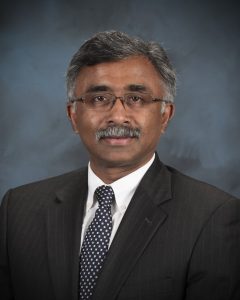



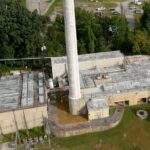
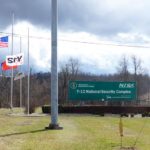

Leave a Reply